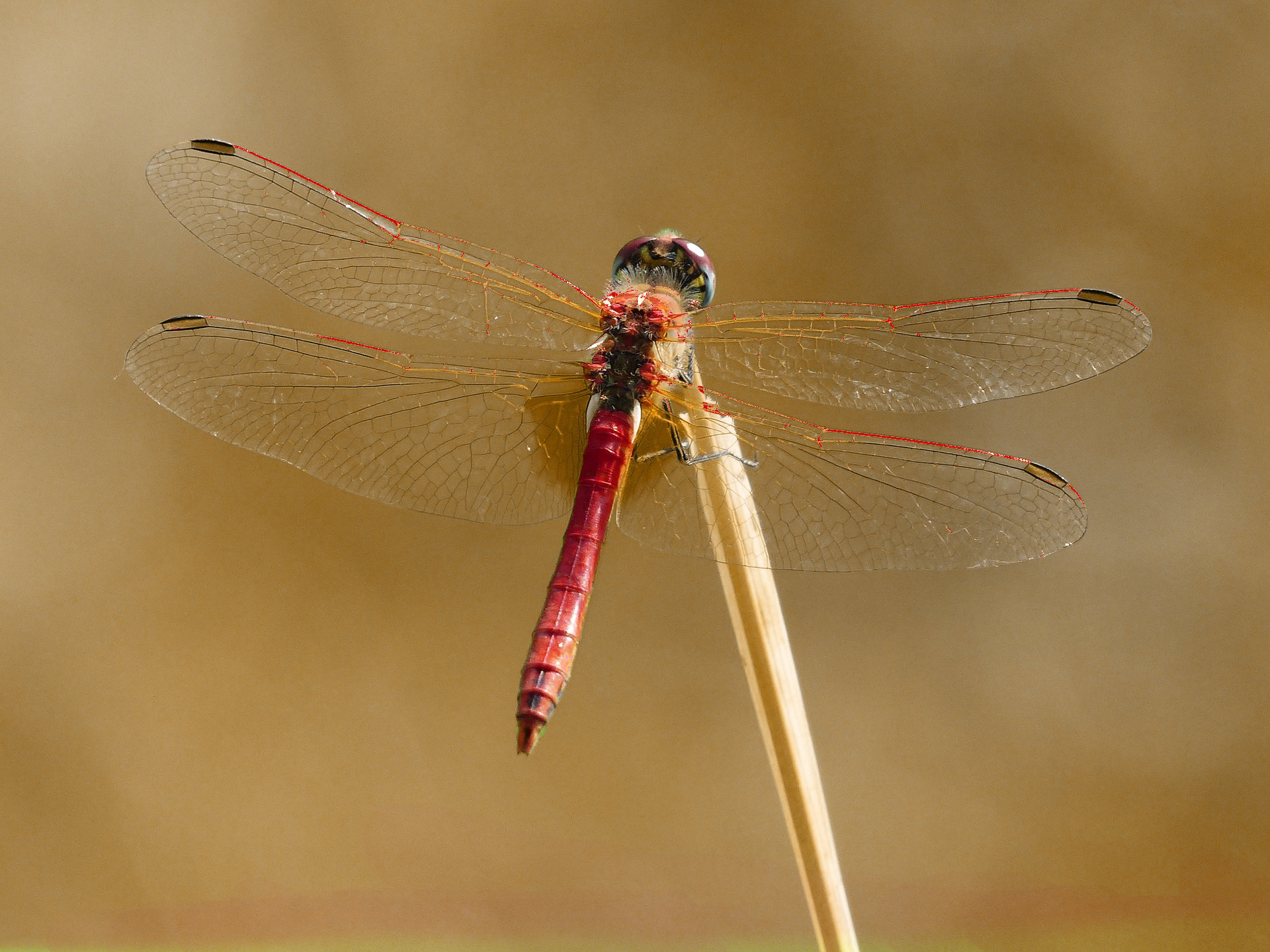Desertic Dragonfly
During the rain season on the north-western arm of the Ulim lake, it's common to observe the flight of this elegant insect, important balancer of a complex ecosystem.
Basic Information
Anatomy

This insect presents a slender red body that can reach eigth centimeter from head to tail, supported by transparent wings with reddish grain carried horizontally. The wingspan is about twelve centimeters, so that wings can be folded along the body when the dragonfly is not flying. They have three pairs of segmented short legs that allows them to interact with the enviroment.
Genetics and Reproduction
Reproduction of dragonflies involve a complex and fascinating ritual that requires first the male to free a territory from other males and attracting a female. After they have to fly together in a coreographic elypsoid position allowing their reproductive organs to match, lastly the female will depose the eggs on the vegetation while the male will prevent the intervention of other males.
Growth Rate & Stages
The life-cycle of this dragonfly last only a few weeks, most of it comprised by the nymphal phase that last about four weeks. During this time the nymphs hatch from the eggs deposed on the flowers of the succulent plant called Lophophora rara and through the rivulets of rainwater reach the water of the lake. Here they become very active hunting larvae of other insects and, as they grow bigger through multiple moults, tadpoles and fish-fry. When ready to become adult a nymph becomes less active, reaching the surface to give time its respiratory apparate to adapt to air. After climbing on some water plants it takes anchorage with the legs and processes a last metamorphosis spreading its wings to start to fly. Most of the adult life is focused on the mating ritual and lasts only two-three weeks long. During the rain season, this process repeat in several seasonal waves granting the presence of adult dragonflies between the Mios Morrigan and Bliadhna Ur. During the dry season the egg that haven't hatched remain quiescent while the Lophophora rara goes through its underground phase, to reactivate at the following rain season.
Additional Information
Perception and Sensory Capabilities
The most important sense is the vision thanks to two large multifaceted eyes, that reflect light. Those occupy the most of the surface of the head and grant this insect a wide range of vision. The hearing organs are two short antenna that can perceive vibration through the air.



These sound really lovely. It's a shame that they only live for a few weeks! :(
I wanted it to be a bit realistic as that the sad truth about all dragonflies, otherwise I had to invent something magic or otherwise to justify the difference. I believe that the ecosystem of the desert is coming round nicely, but I prefer to not judge myself. I move from the assumption that if I did something means that I saw some beauty in it.